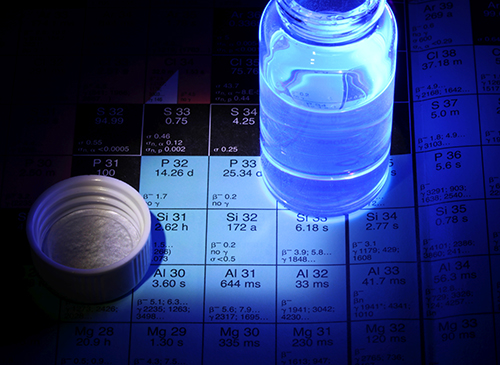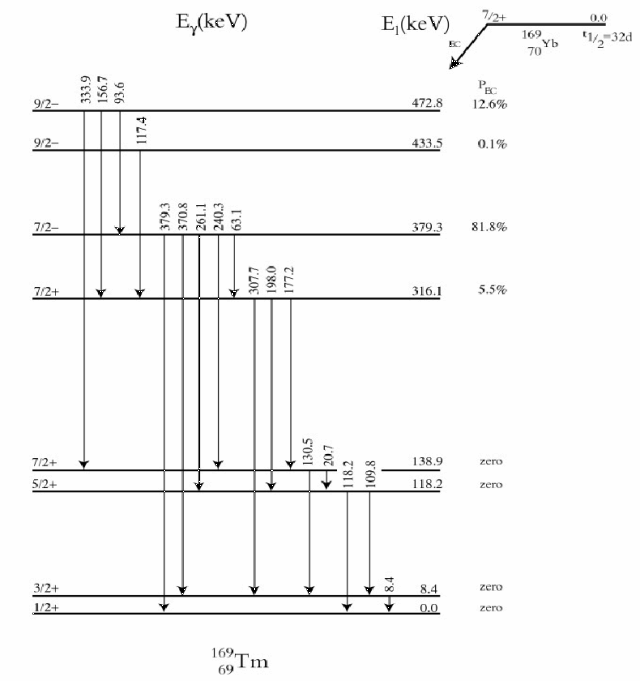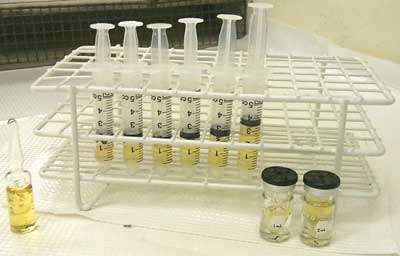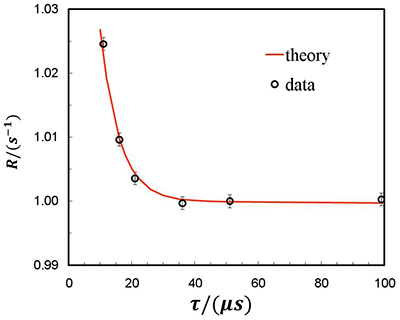ICRM activities are largely the responsibility of its working groups. Each group is guided by a coordinator who acts as a centre for ideas and communications and may organize conferences and workshops. There are now seven working groups with the following fields of interest and assigned coordinators:
-
Alpha-Particle Spectrometry: S. Pommé, European Commission, Joint Research Centre (EC-JRC), Institute for Reference Materials and Measurements (IRMM), Retieseweg 111, B-2440 Geel, Belgium,
e-mail: [email protected] -
Beta-Particle Spectrometry: X. Mougeot, Laboratoire National Henri Becquerel (LNE-LNHB), CEA-Saclay, F-91191 Gif-sur-Yvette Cedex, France,
e-mail: [email protected] -
Gamma-Ray Spectrometry: M.-C. Lépy, Laboratoire National Henri Becquerel (LNE-LNHB), CEA-Saclay, F-91191 Gif-sur-Yvette Cedex, France,
e-mail: [email protected] -
Liquid Scintillation Counting: K. Kossert, Physikalisch-Technische Bundesanstalt (PTB), Bundesalle 100, D-38116 Braunschweig, Germany,
e-mail: [email protected] -
Low-Level Measurement Techniques: D. Zapata, Physikalisch-Technische Bundesanstalt (PTB), Bundesalle 100, D-38116 Braunschweig, Germany
e-mail: [email protected]Subgroup MS: B. Russell, National Physical Laboratory (NPL), Hampton Road, Teddington, Middlesex, TW11 0LW, UK
email: [email protected] -
Life Sciences: J. Cessna, National Institute of Standards and Technology (NIST), Gaithersburg, Maryland, 20899-8462, U.S.A.,
e-mail: [email protected] -
Nuclear Decay Data: M. Kellett, Laboratoire National Henri Becquerel (LNE-LNHB), CEA-Saclay, F-91191 Gif-sur-Yvette Cedex, France,
e-mail: [email protected] Radionuclide Metrology Techniques: R. Fitzgerald, Physical Measurement Laboratory, National Institute of Standards and Technology (NIST), Gaithersburg, Maryland, 20899-8462, U.S.A.,
e-mail: [email protected]C. Bobin, Laboratoire National Henri Becquerel (LNE-LNHB), CEA-Saclay, F-91191 Gif-sur-Yvette Cedex, France,
e-mail: [email protected]Subgroup DCC: J. Keightley, National Physical Laboratory (NPL), Hampton Road, Teddington, Middlesex, TW11 0LW, UK,
e-mail: [email protected]Subgroup Internal Gas Counting: S. Bell, National Physical Laboratory (NPL), Hampton Road, Teddington, Middlesex, TW11 0LW, UK,
e-mail: [email protected]Subgroup Large Area Sources: O. Nähle, Physikalisch-Technische Bundesanstalt (PTB) Bundesallee 100, 38116 Braunschweig,
e-mail: [email protected]
Note: This information is made available through the National Institute of Standards and Technology (NIST) facilities. However, the views expressed and the decisions reported do not necessarily connote NIST agreement with, or endorsement of them. Further, NIST does not endorse any commercial products that may be mentioned. Any comments that you provide by e-mail or by submitting an on-line form may be sent to members of the ICRM who may not follow the same NIST privacy practices.
Alpha-Particle Spectrometry Working Group
Within the last years, the development of new techniques for the fabrication of Si detectors and the design of new measurement chambers, has produced considerable advances in the field of alpha-particle spectrometry with semiconductor detectors. Peak resolutions are now close to 8.5 keV, approaching the theoretical limit attainable with this kind of detectors. From the side of numerical analysis of spectra, a major effort has been dedicated by several laboratories to produce reliable fitting programs. Although it is difficult to give a comprehensive listing of activities, the following items describe the main areas of research.
- Development of new measurement techniques
- Improvement of fitting programs
- Measurement of nuclear data with emphasis on alpha-particle emission probabilities
- Computer simulation of the physical processes in the detector and source
Beta Particle Spectrometry Working Group
This Working Group is devoted to the development of the metrological aspects of beta-particle spectrometry and its applications. This includes, but is not restricted to:
- Theory
- Beta (β±) and electron capture (ε) transitions
- Theoretical shape factors and influence of the nuclear current
- Atomic effects
- Experiments
- Instrumentations used for beta spectrometry
- Techniques that need beta information
- Confidence on experimental shape factors
- Data analysis and unfolding methods
- Simulations
- Confidence on the physical processes: low energies, radioactive decays, atomic rearrangements
- Comparison of the results of different codes: Geant4, Penelope, etc.
- Evaluations and dissemination
- Confidence and uncertainties on experimental shape factors
- Evaluation procedure for establishing recommended experimental shape factors
- Mean energies, log ft values, database
Other suggested topics are welcome.
Gamma-Ray Spectrometry Working Group
Gamma-ray spectrometry is a widely used analysis technique, with applications in a large range of fields and expertise. The ICRM Gamma Spectrometry Working Group (GSWG) is devoted to the development of the metrological aspects of gamma-ray spectrometry and its applications.
This includes, but is not restricted to:
- Characterization of measurement techniques and instrumentation,
- Determination of photon emission intensities,
- Determination and assessment of corrective factors and uncertainties,
- Determination of activity of gamma-emitting radionuclides for industrial, or safety applications, etc.
The GSWG promotes collaboration between the WG members to improve the analytical techniques and distributes practical information in order to disseminate the knowledge and know-how to various laboratories.
 Liquid Scintillation Working Group
Liquid Scintillation Working Group
The purpose of the Liquid Scintillation Counting Working Group is to provide a forum for ICRM members to address issues related to liquid scintillation and Čerenkov counting. In particular, the CIEMAT/NIST efficiency tracing and the Triple-to-Double-Coincidence Ratio (TDCR) methods play major roles in Radionuclide Metrology. In the past two decades, many new developments were presented by ICRM researchers, e.g., new counter systems, new electronics for signal treatment and data acquisitions, investigations of existing models and extensions of calculation procedures. These methods are used for activity standardization of a growing number of radionuclides as well as for determination and validation of radionuclide decay data.
Low Level Measurement Techniques Working Group
 The ICRM working group for Low-Level Measurements Techniques (LLMT) examines techniques to enable the detection of ever smaller amounts of radioactivity. This enables, for example, collecting smaller samples and realising new applications involving radionuclides. The working group focuses on metrology and the latest developments in a variety of areas, including measurement of environmental radioactivity, radionuclides in food and drinking water, reference materials characterisation, tracer studies and nuclear physics research. Conference proceedings are published in refereed scientific journals.
The ICRM working group for Low-Level Measurements Techniques (LLMT) examines techniques to enable the detection of ever smaller amounts of radioactivity. This enables, for example, collecting smaller samples and realising new applications involving radionuclides. The working group focuses on metrology and the latest developments in a variety of areas, including measurement of environmental radioactivity, radionuclides in food and drinking water, reference materials characterisation, tracer studies and nuclear physics research. Conference proceedings are published in refereed scientific journals.
The most recent ICRM - Low-Level Radioactivity Measurement Techniques Conference, ICRM-LLRMT 2022, was organized by the Low-Level Measurement Techniques Working Group (LLRMT) and hosted by the INFN-LNGS at the Gran Sasso National Laboratory in Assergi (Italy), 2-6 May 2022. The Conference Proceedings have been published in a special issue of Applied Radiation and Isotopes (https://www.sciencedirect.com/journal/applied-radiation-and-isotopes/vol/194/suppl/C#article-36). The next Conference will be organized in 2026.
Nuclear Decay Data Working Group
The Nuclear Decay Data Working Group (3NDWG) facilitates awareness and communications between ICRM members interested in the measurement, calculation, compilation and evaluation of decay data, and the maintenance of computer-based decay data files (e.g., half-lives; energies and emission probabilities of alpha particles, beta particles, gamma rays, x-rays, conversion electrons and Auger electrons; internal conversion coefficients; transition types; and other relevant parameters, including uncertainties).
Members of the 3NDWG are encouraged to use the Working Group to communicate experimental and theoretical work, relevant evaluation procedures, their decay data problems, and to establish methodologies that are fully consistent with the satisfactory production of recommended decay data.
The 3NDWG Coordinator strives to maintain satisfactory links between all active members to achieve the primary aim (see above), and to inform them of all relevant activities identified with the creation and maintenance of decay-data files.

Life Sciences Working Group
 The purpose of the Life Sciences Working Group is to provide a forum for ICRM
members to address radionuclide metrology issues as they relate to the life
sciences. Issues may include, but are not limited to: development of
methodologies to calibrate short-lived radionuclides of interest in nuclear
medicine, measurement of decay properties (half-lives, decay energies and
probabilities, etc.) of radionuclides used in nuclear medicine and biological
research, development of measurement methodologies for transferring National
Measurement Standards to the clinic and research laboratory, and development of
methods to perform radioactivity assays of brachytherapy sources. The Working
Group will facilitate finding solutions to these problems through workshops,
publications, electronic communications (i.e., email), and collaborative work.
The Coordinator will maintain communication links between the members and will
periodically report to the group new issues and advancements in the field.
The purpose of the Life Sciences Working Group is to provide a forum for ICRM
members to address radionuclide metrology issues as they relate to the life
sciences. Issues may include, but are not limited to: development of
methodologies to calibrate short-lived radionuclides of interest in nuclear
medicine, measurement of decay properties (half-lives, decay energies and
probabilities, etc.) of radionuclides used in nuclear medicine and biological
research, development of measurement methodologies for transferring National
Measurement Standards to the clinic and research laboratory, and development of
methods to perform radioactivity assays of brachytherapy sources. The Working
Group will facilitate finding solutions to these problems through workshops,
publications, electronic communications (i.e., email), and collaborative work.
The Coordinator will maintain communication links between the members and will
periodically report to the group new issues and advancements in the field.
Coordinator's Annual Report (PDF)
LSWG Meeting, 12-13 November 2008, NPL, Teddington, UK
Radionuclide Calibrator Measurements
 Radionuclide Metrology Techniques Working Group
Radionuclide Metrology Techniques Working Group
The ICRM Radionuclide Metrology Working Group (RMT-WG) consists of experts in the field of radionuclide metrology. Meetings of the RMT-WG are held approximately annually as a forum for practitioners to share ongoing developments, gain input from peers on challenges, and work together to address common needs. Historically, a focus has been on 4πβ-γ coincidence counting, and its variants. More recently, that topic has broadened to address the metrology of counting for a variety of measurement methods, and especially the many aspects of absolute counting using digital electronics, which has become an RMT-WG subgroup. Radioactive gas counting and large area source measurements are also fields of significant interest to become subgroups of RMT-WG. The RMT-WG covers other topics important to the radionuclide metrology community, from quantitative source preparation to informing the community about proper citations in manuscripts. To this end, the RMT-WG liaises with other ICRM WGs, the CCRI(II) and its WGs, the BIPM, and other stakeholders.
2024 RMT-WG Meeting: Pedagogical Presentations